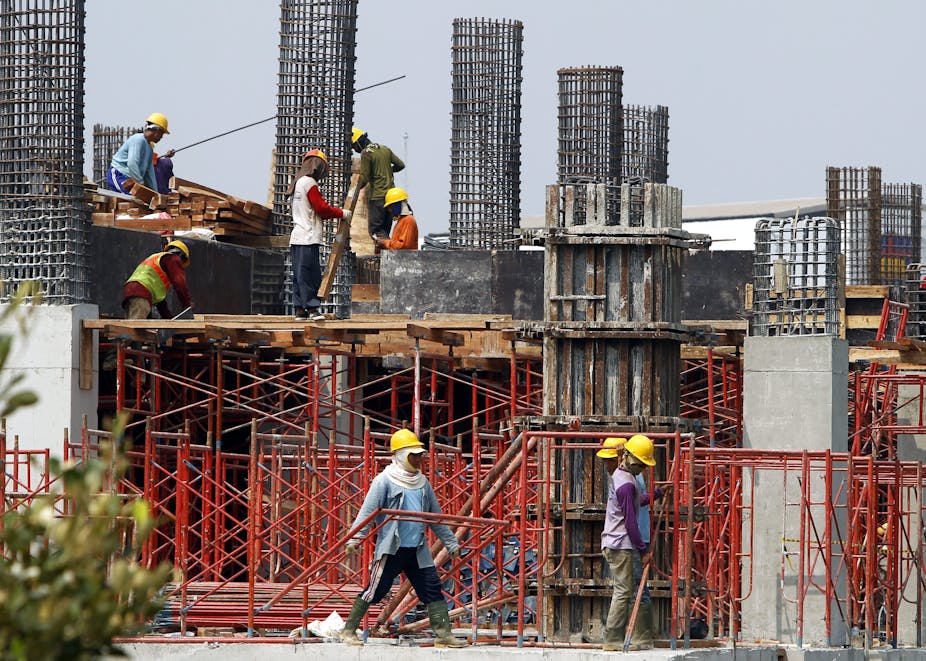If measured by political will and rhetoric, Australia’s relationship with Southeast Asia would undeniably be in fine shape. Prime ministers as diverse as Paul Keating, Tony Abbott and Julia Gillard have all had much to say on this relationship.
We see a commitment to understanding the economic and political dynamics of the “Asian Century”; Abbott making Indonesia his first foreign trip as prime minister and describing his foreign policy focus as “More Jakarta, less Geneva”; and Keating emphasising how such strategic regional relationships would “energise” Australia’s national identity and role. No one could argue that Australia’s leaders aren’t at least vocal on the powerful factors at play in the region.
The closeness and developing nature of these economic and political ties cannot be based solely on crudely defined economic growth. Whether that growth helps alleviate poverty and creates the health, transport, education and energy infrastructure that the growing populations of the region require will be a major factor which either strengthens or weakens relations among ASEAN nations and with the wider global economy.
In short, Southeast Asia is at the heart of the global challenge of achieving sustainable development.
The challenges of growth
For Australia, put simply, we are where we are: close to and part of a region that is undergoing exponential economic growth.
Our focus on the emergence of China, with growth rates expected to continue above 7% and an economy fueled by all the resources Australian can provide, neglects a broader truth: the projected average growth rate for all countries in the Association of Southeast Asian Nations (ASEAN) is more than 5%.
This is a statistic of potentially greater importance. Insulated against the political and economic ebbs and flows in any single country, Australia cannot afford to ignore the ASEAN countries. Indonesia is already the 16th-largest economy in the world and is predicted to be ninth by 2030. Our future prime ministers will have to get used to the drive into Jakarta from Soekarno–Hatta International Airport.
As Australia marks the 40th anniversary of our association with ASEAN, it is clear this relationship will only become more important. In coming years, Australia will be buying more goods from the region and providing products and services to the 600 million or so people living in Brunei, Cambodia, Indonesia, Laos, Malaysia, Myanmar, Philippines, Singapore, Thailand and Vietnam.
Just as Malaysia and Australia are working together to find the missing flight MH370, so only through closer regional cooperation can we achieve a more humane and effective approach to managing human movements and develop better ways to tackle climate change and reverse biodiversity and species decline.
Sadly, Southeast Asia leads the world not only in economic growth but also in number of threatened species. The International Union for Conservation of Nature (IUCN) Red List shows that half of the top 20 countries for numbers of threatened species are in Asia. Indonesia has 183 mammal species at risk of extinction, almost double the number for second-placed Mexico.
Recent policies offer hope
Recent years have produced more positive signs. The development policies adopted by many Asian economies have increasingly focused on the quality of growth and investment. Thailand’s five-year plan is pursuing a new model of holistic people-oriented development. Indonesia aims to create “a country that is prosperous, democratic and just”, while Cambodia seeks “growth, employment, equity and efficiency”.
These are fine words. Yet implementing them is not just a matter of effective governance and implementation. It is critical for civil society, the private sector and government to have a more assertive role in ensuring that growth means more than private profit for multinational firms.

It is heartening that Australian Environment Minister Greg Hunt, through convening a Southeast Asian rainforest summit later this year, has recognised the opportunity to work with our nearest neighbours to avoid further deforestation.
There is good reason: more than 100 million hectares of the world’s remaining pristine forests have been lost since 2000. No multinational firm using packaging or buying paper and tissue products wants to be associated with this.
We have seen effective campaigns and awareness-raising by environmental groups such as Greenpeace. Some of the largest pulp and paper and palm oil companies have committed to previously unimaginably ambitious and laudable “zero-deforestation” policies backed up by robust, well-resourced means for their implementation. There is a chance that some of the richest habitats in the world can be saved.
Time will tell whether this is – again – more about marketing and market access than reversing deforestation and adopting more sustainable business practices for good. One needs to be alert, but achieving environmentally and socially sustainable growth in the region requires new partnerships between government, the private sector and civil society. If achieved, it will be a vital part of reducing the risks of climate change and creating a more resource-efficient and sustainable global economy.
And for the ASEAN nations, working with countries like Australia, a failure to demonstrate how to maintain economic growth while protecting the environment and providing vital human services, will sadly mean they and we, will all lose.
This article is based on a presentation by the author to a public forum on sustainable economic growth in Southeast Asia tonight, September 11, at the Sydney Law School.

